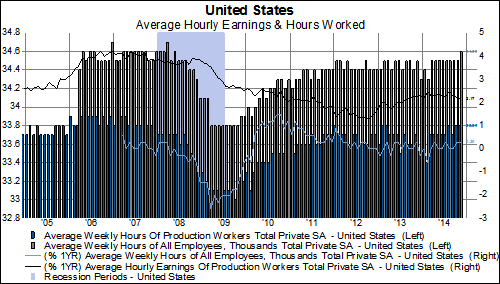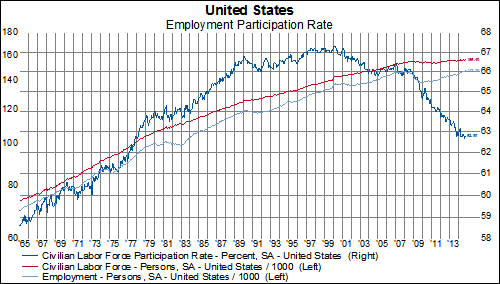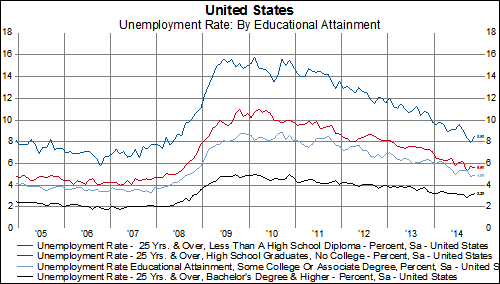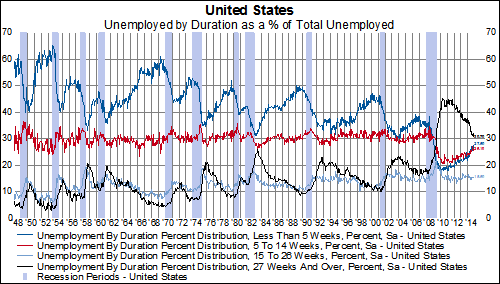Autodesk (Ticker: ADSK) is a design software and services company that serves customers in various fields ranging from architecture, engineering, construction, manufacturing, digital media and entertainment. We think there is a positive case to be made for Autodesk in 2015, especially when one properly accounts for their vast
intangible capital reservoir on their balance sheet.
According to GICS classification, Autodesk is in the information technology sector and in the application software sub-industry. In the MSCI North America, there are a total of 12 companies in application software sub-industry with well known companies such as Adobe Systems, Citrix Systems and Salesforce.com.
As figure one shows, year-to-date Autodesk is up an impressive 22%. We believe Autodesk may be able to continue its relative outperformance in 2015 as well.
Figure 1 - Year-To-Date Performance

Let's begin where we usually begin when analyzing stocks - valuations. As figure two illustrates, Autodesk seems to have lofty valuations, both in an absolute sense (24.9x CF) as well as in relative sense (6th highest P/CF in the group). However, after accounting for intangible investments and assets that go uncounted under traditional accounting practices, a more compelling valuation argument can be made (Figure 3). Autodesk drops to the seventh most expensive company in the group by P/CF and its P/CF ratio declines into single digits. Also, its P/B ratio is reduced by about half from 6.2x to 3.2x.
Figure 2 - "As-Reported" Valuations
 Figure 3 - Intangible-Adjusted Valuations
Figure 3 - Intangible-Adjusted Valuations

Autodesk is a large, consistent investor in intangible assets. Autodesk spends nearly 42% of its sales on R&D and other intangible assets while spending only 2.8% on tangible fixed assets (Figure 4). Autodesk leads the group with 34.8% of its assets categorized as intangible assets and only 2% of its assets invested in PP&E (Figure 5). With an organizational commitment to investing in intangibles and minimizing its fixed capital stock, it is thus not surprising that Autodesk
has incredibly high margins and low debt levels
. Autodesk has the highest gross margins in the group at an impressive 87.9% and has a net debt level of -29.9% (Figure 6).
Figure 4 - Intangible-Adjusted Investments as a % of Sales
 Figure 5 - Intangible-Adjusted Balance Sheet
Figure 5 - Intangible-Adjusted Balance Sheet
 Figure 6 - Intangible-Adjusted Margins
Figure 6 - Intangible-Adjusted Margins

Moving on to sales and earnings expectations, financial analysts are not expecting much from Autodesk over the next four years. Sales are only expected to grow by an average of 5.8% per year, which is the second lowest in the group ahead of only Nuance Communications (Figure 7). EPS growth expectations are even lower as analysts are projecting two negative EPS years out of the next four for Autodesk. FY1 earnings are expected to crater by 30% while FY4 earnings are expected to fall by nearly 8%. Overall, Autodesk has the lowest four year average for EPS at -2.5% (Figure 8). These expectations seem even lower after considering Autodesk's impressive track record of growth over the past 20 years. Autodesk has managed to grow sales by 8.5% per year and EPS by 6.9% per year over the past 20-years according to our least squares growth rate calculation (Figure 9). Autodesk has also managed to grow book value by 10.6% and cash flow by 9.7%. Taking it all together, the external expectations on Autodesk seem like a low hurdle to clear.
Figure 7 - Analyst's Sales Growth Expectations
 Figure 8 - Analyst's EPS Growth Expectations
Figure 8 - Analyst's EPS Growth Expectations
 Figure 9 - Intangible-Adjusted Growth Rates
Figure 9 - Intangible-Adjusted Growth Rates

Last but not least, let's take a look at how Autodesk looks from a technical perspective. Using our
proprietary point and figure charting methodology, Autodesk is breaking out to new highs relative to the MSCI World Index after spending most of the past four years in a trading range. It has consolidated for most of 2014 and looks like it could make a substantial break out in 2015.





































































